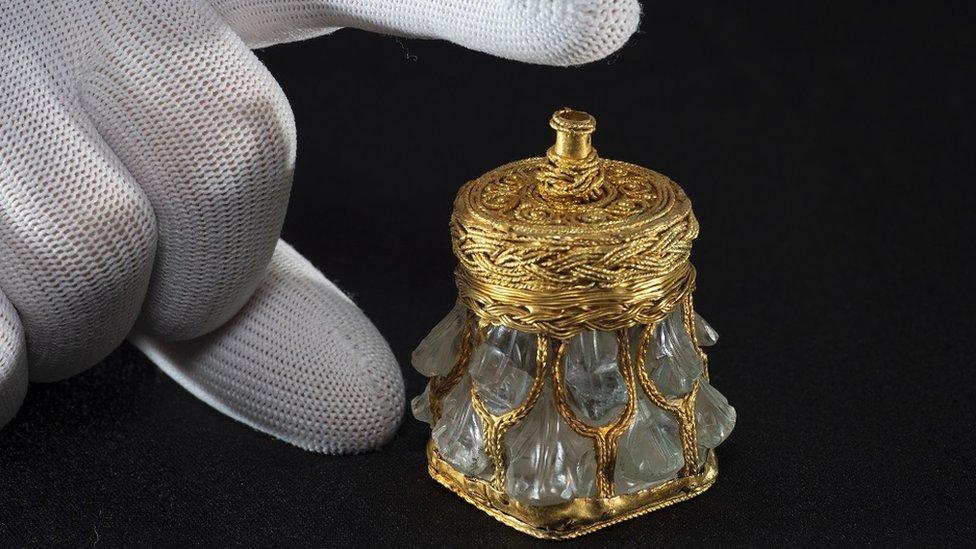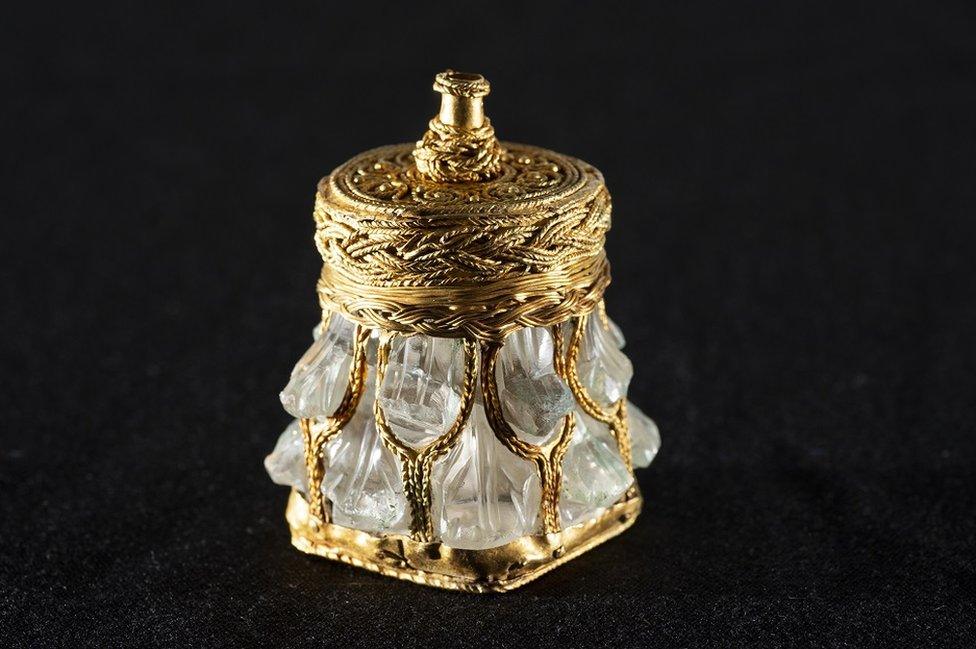Mystery bishop's name found on Viking-age hoard jar
- Published

The jar was part of a treasure hoard unearthed by a metal detectorist in southern Scotland in 2014
The name of a mystery bishop has been found inscribed on a rare rock crystal jar which was part of the Galloway Viking-age treasure hoard.
The item was one of a range of treasures found in a south of Scotland field by a metal detectorist in 2014.
Researchers have now found a Latin inscription, in gold, on its base which says: "Bishop Hyguald had me made".
Experts said it was "frustratingly difficult" to identify him but he may have been a mid-9th Century bishop.

The inscription was found, in gold, on the base of the jar
The Galloway hoard was unearthed by Derek McLennan seven years ago and most of it is currently on display in Kirkcudbright.
However, some material which was wrapped in fragile textiles is currently undergoing careful conservation and research.
National Museums Scotland (NMS) said that when it was first removed as a bundle the jar could only be partially glimpsed through its textile wrapping.
It took 3D X-ray imaging - done in partnership with the British Museum - to reveal the inscription.
It is said to be the "clearest evidence" that some of the items in the hoard may have come from the Anglo-Saxon kingdom of Northumbria which included Dumfries and Galloway.

The jar was found wrapped in fragile textiles
Prof Alex Woolf, senior lecturer at the University of St Andrews, said: "The sources and records of the period are incomplete, but what we do know from them is that there were several ecclesiastics in early medieval Northumbria with the name Hyguald.
"We don't know of a Bishop Hyguald, specifically, but our lists of Northumbrian bishops are incomplete after 810.
"It is accordingly - and frustratingly - difficult to be more precise but it may well be that what we're looking at is an otherwise undocumented mid-9th Century bishop of either Whithorn or Hexham."
NMS principal curator Dr Martin Goldberg said there were parallels in the Roman Empire for objects of this type.
"The ones that I have seen are in the Vatican collection, where there are different forms of carved crystal columns," he said.
"And so it was maybe 500 years old by the time it was transformed in the late 8th or early 9th Century into a gold-wrapped jar."

It is believed the jar may have been made for a 9th Century bishop of Whithorn or Hexham
Dr Leslie Webster, former Keeper of Britain, Prehistory and Europe at the British Museum, said the jar was likely to have come from a "very high-status workshop".
"This object is absolutely fascinating," she said.
"I've seen a lot of Anglo-Saxon finds over the years in my professional career, some of them amazing.
"But this absolutely knocks them all into a cocked hat."
- Published10 October 2021
